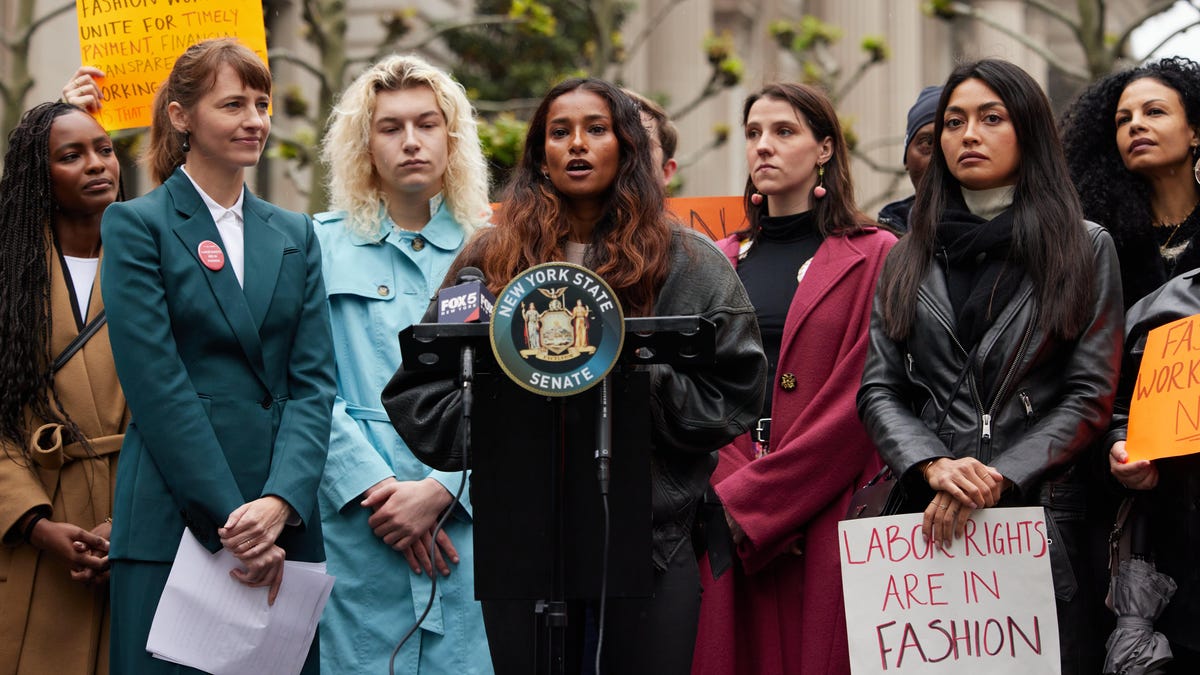More Models Come Forward With Disturbing Claims of Sex and Labor Trafficking

Kaja Sokola, one of the women who came forward with accusations against Harvey Weinstein during the #Me Too movement, says that the culture of the industry still provides men like Weinstein special access and proximity to the young models, many of whom are still teenagers launched into New York City with essentially no adult supervision. In September 2002, a 16-year-old Sokola had just arrived from Poland when she attended an event hosted by her modeling agency, NEXT. She met Weinstein there, and three days later, Sokola says the producer sexually assaulted her. “Modeling agencies are sometimes like pimps for rich people,” she says.
“The modeling industry really does in some cases rise to the level of trafficking—labor trafficking and sex trafficking,” says Ziff, who helps educate models about their rights within the industry and is currently fighting to improve their workplaces. “This lack of transparency, the power imbalance, the vulnerability of these mostly young, immigrant women, it's a recipe for exploitation. In the early stages of doing this work, I refrained from using the language of trafficking because it felt too extreme. But that's what it is.”
Ziff and other members of the Model Alliance helped craft legislation titled the Fashion Workers Act, which was designed to hold modeling agencies accountable for model abuse they've caused or enabled. On June 8, the New York Senate passed the law, bringing models one step closer to basic rights such as requiring agencies to provide workers copies of their contracts and enacting a zero-tolerance policy for abuse.
The Assembly is expected to return later this month for a final vote on the act—and let's hope it actually does something.
This “Eyes on Trafficking” story is reprinted from its original online location.
Fair Use Notice: The PBJ Learning Knowledge Vault is dedicated to advancing understanding of various social justice issues, including human trafficking and related topics. Some of the material presented on this website may contain copyrighted material, the use of which has not always been specifically authorized by the copyright owner. We are making such material available in our efforts to promote education and awareness of these important issues. There is no other central database we are aware of, so we put this together for both historical and research purposes. Articles are categorized and tagged for ease of use. We believe that this constitutes a ‘fair use' of any such copyrighted material as provided for in section 107 of the US Copyright Law. In accordance with Title 17 U.S.C. Section 107, the material on this site is distributed without profit to those who have expressed a prior interest in receiving the included information for research and educational purposes. For more information on fair use, please visit: “17 U.S. Code § 107 – Limitations on exclusive rights” on Cornell Law School's Legal Information Institute.
 ABOUT PBJ LEARNING
ABOUT PBJ LEARNING
PBJ Learning is a leading provider of online human trafficking training, focusing on awareness and prevention education. Their interactive Human Trafficking Essentials online course is used worldwide to educate professionals and individuals how to recognize human trafficking and how to respond to potential victims. Learn on any web browser (even your mobile phone) at any time.
More stories like this can be found in your PBJ Learning Knowledge Vault.
EYES ON TRAFFICKING
This “Eyes on Trafficking” story is reprinted from its original online location.
ABOUT PBJ LEARNING
PBJ Learning is a leading provider of online human trafficking training, focusing on awareness and prevention education. Their interactive Human Trafficking Essentials online course is used worldwide to educate professionals and individuals how to recognize human trafficking and how to respond to potential victims. Learn on any web browser (even your mobile phone) at any time.
More stories like this can be found in your PBJ Learning Knowledge Vault.
